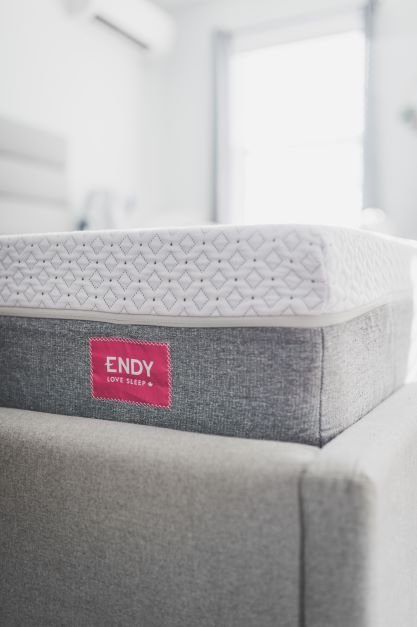The importance of a good pillow for a good night’s sleep
A good night’s sleep is essential for overall health and well-being. However, many struggle to get the recommended 7-9 hours of sleep each night. One factor that can significantly impact sleep quality is your pillow. A good pillow provides adequate support for the head, neck, and shoulders, which helps maintain the spine’s natural curvature.
Choosing the right pillow for individual needs can be challenging, but it is essential to achieving a good night’s sleep. This can prevent aches and pains and promote healthy breathing and circulation. On the other hand, a poor-quality pillow can lead to discomfort, exacerbate chronic issues, and compromise the ability to get enough shut-eye. This article will explore the importance of a good pillow for a restful night’s sleep and provide tips for selecting the right pillow to suit different sleeping positions and preferences.
The Importance of Sleep
Sleep is a vital process that allows the body to rest and repair itself. It helps to regulate hormones, boost the immune system, and improve cognitive function. Lack of sleep can lead to various health problems, including obesity, diabetes, heart disease, and depression. One of the critical factors that can affect the quality of sleep is the pillow. A good pillow can help to support the head and neck, alleviate pain and discomfort, and promote better sleep posture. It can also help to reduce snoring and other sleep-related problems. There are several factors to consider when choosing a pillow, including the material, shape, and firmness.
Memory foam pillows are popular as they provide excellent support and contour to the head and neck shape. Latex pillows are hypoallergenic and durable but may be too firm for some. Feather and down pillows are soft and comfortable but may not provide enough support for some sleepers.
The Role of a Pillow in Sleep Quality
A pillow is an essential component of a good night’s sleep. It provides support for the head, neck and shoulders, which helps to maintain the natural curvature of the spine. This support can help prevent aches and pains and promote healthy breathing and circulation.
- Spinal Alignment – One of the critical roles of a pillow is to ensure proper spinal alignment during sleep. A good pillow should support the spine’s natural curvature, which helps prevent aches and pains. When aligned correctly, the spine can promote healthy breathing and circulation, leading to a more restful night’s sleep.
- Comfort – Comfort is another crucial factor in choosing the right pillow. A good pillow should be comfortable and adequately support the head and neck. A too firm or soft pillow can cause discomfort and lead to a restless night’s sleep.
- Support – A good pillow should adequately support the individual’s sleeping position and body type. The right pillow should also offer adequate support for the head, neck and shoulders. This can help prevent aches and pains and promote healthy breathing and circulation. A pillow that is too flat or too high can cause discomfort and lead to a restless night’s sleep.
The Different Types of Pillows
Memory Foam Pillows – Memory foam pillows are made of a viscoelastic material that moulds to the head and neck shape. This type of pillow is ideal for people who suffer from neck and shoulder pain, as it provides excellent support and pressure relief. Memory foam pillows come in different shapes and sizes, including contoured and traditional styles. One of the main advantages of memory foam pillows is that they are hypoallergenic and resistant to dust mites. They also retain their shape and do not need to be fluffed or repositioned during the night. However, some people may find memory foam pillows too firm or hot.
Feather Pillows – Feather pillows are made of natural materials, such as goose or duck feathers. They are soft and lightweight and provide a luxurious feel. Feather pillows are ideal for people who prefer a traditional pillow that can be easily adjusted and moulded to their desired shape. One of the main advantages of feather pillows is that they are breathable and regulate temperature. They are also durable and can last for several years if properly maintained. However, feather pillows may not suit people with allergies or asthma, as they can harbour dust mites and other allergens.
Latex Pillows – Latex pillows are made of natural or synthetic rubber and provide excellent support and comfort. They are ideal for people who prefer a firmer pillow that does not lose shape over time. Latex pillows come in different shapes and sizes, including contoured and traditional styles. One of the main advantages of latex pillows is that they are hypoallergenic and resistant to dust mites. They are also durable and can last for several years if properly maintained. However, some people may find latex pillows too firm or heavy.
Buckwheat Pillows – Buckwheat pillows are made of natural buckwheat hulls and provide excellent support and ventilation. They are ideal for people who prefer a firmer pillow that can be easily adjusted and moulded to their desired shape. Buckwheat pillows come in different shapes and sizes, including contoured and traditional styles.
Choosing the Right Pillow
When choosing a pillow, there are several factors to consider, including sleeping position, personal preferences, allergies, and medical conditions. A pillow that is not supportive or comfortable can lead to neck pain, headaches, and poor sleep quality.
Sleeping Position
The sleeping position is an essential factor to consider when choosing a pillow. Different sleeping positions require different types of pillows to ensure proper spinal alignment and prevent discomfort.
| Sleeping Position | Ideal Pillow Type |
|---|---|
| Back Sleeper | Medium-thick pillow to keep the head, neck, and spine aligned. |
| Side Sleeper | Slightly thicker, firmer pillow for optimal alignment. |
| Stomach Sleeper | Thin, soft pillow to prevent neck strain. |
Personal Preferences
Personal preferences also play a significant role in choosing the right pillow. Some people prefer soft pillows, while others prefer firm cushions. The pillow’s material can also affect personal preferences, with options such as memory foam, down, or latex.
- Memory Foam: Conforms to the head and neck shape for optimal support.
- Down: Soft and lightweight, ideal for those who prefer a fluffy pillow.
- Latex: Firm and supportive, ideal for those who prefer a pillow with bounce.
Allergies and Medical Conditions
Allergies and medical conditions can also impact the choice of pillow. For those with allergies, hypoallergenic pillows are available, made with materials that resist dust mites and other allergens. Specialized pillows can alleviate symptoms and improve sleep quality for those with medical conditions such as sleep apnea or acid reflux.
Caring for Your Pillow
A good pillow is an investment in a good night’s sleep. To ensure your pillow stays in top condition, it’s essential to care for it properly. Following these 6 tips:
- Wash your pillowcase regularly to keep it clean and free of allergens.
- Follow the care instructions on the pillow’s label. Some pillows can be machine-washed and dried, while others need to be spot-cleaned or dry-cleaned.
- Fluff your pillow daily to help maintain its shape and support.
- Replace your pillow every 1 to 2 years to ensure it supports your head and neck.
- If you have a feather or down pillow, it’s essential to fluff it regularly to prevent the filling from clumping together. You can also put it in the dryer on low heat with a couple of clean tennis balls to help fluff it up.
- If you have a memory foam pillow, following the care instructions carefully is essential. Most memory foam pillows should not be machine-washed or dried, as this can damage the foam. Instead, spot-clean the pillow with a damp cloth and mild detergent, and allow it to air dry completely.



